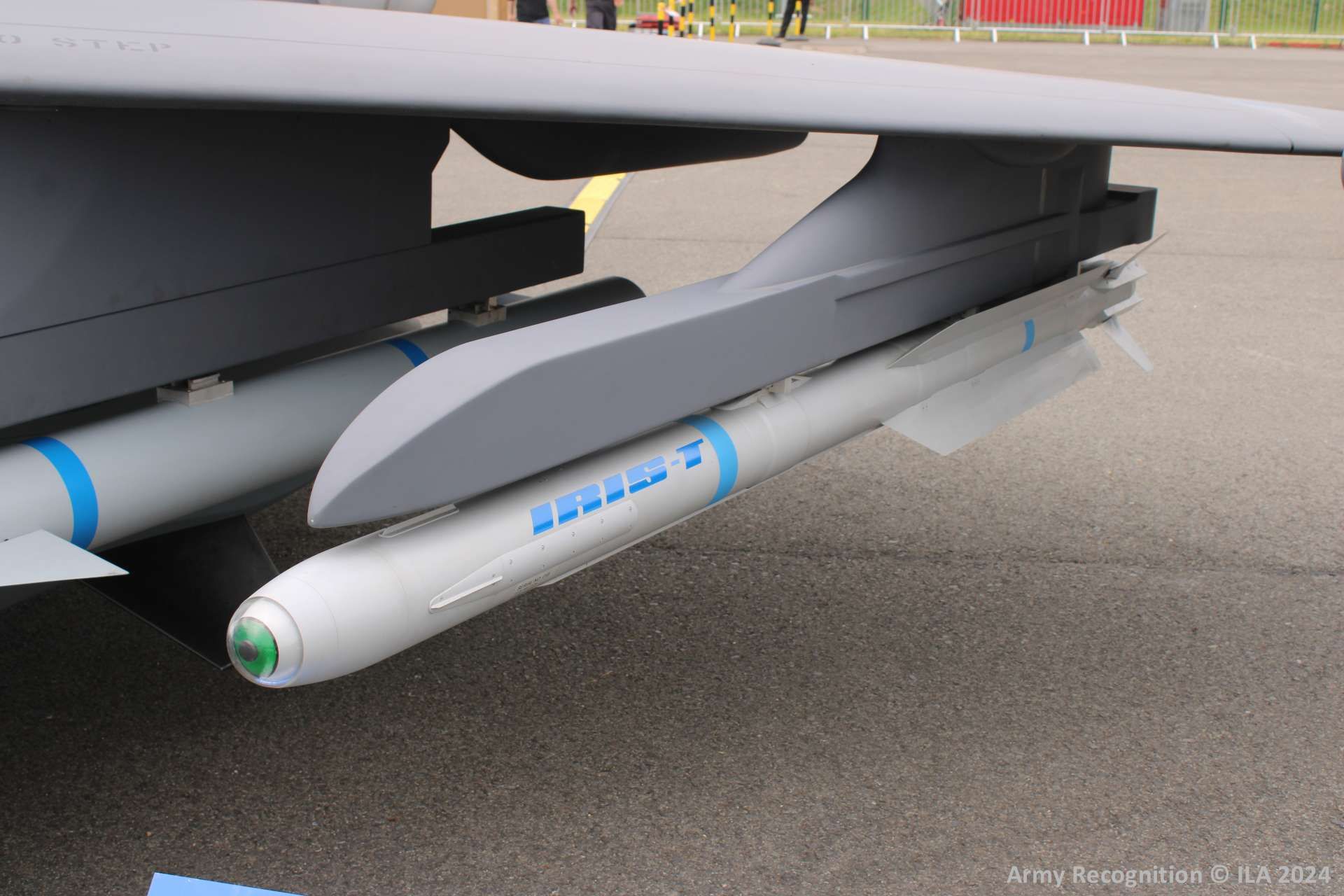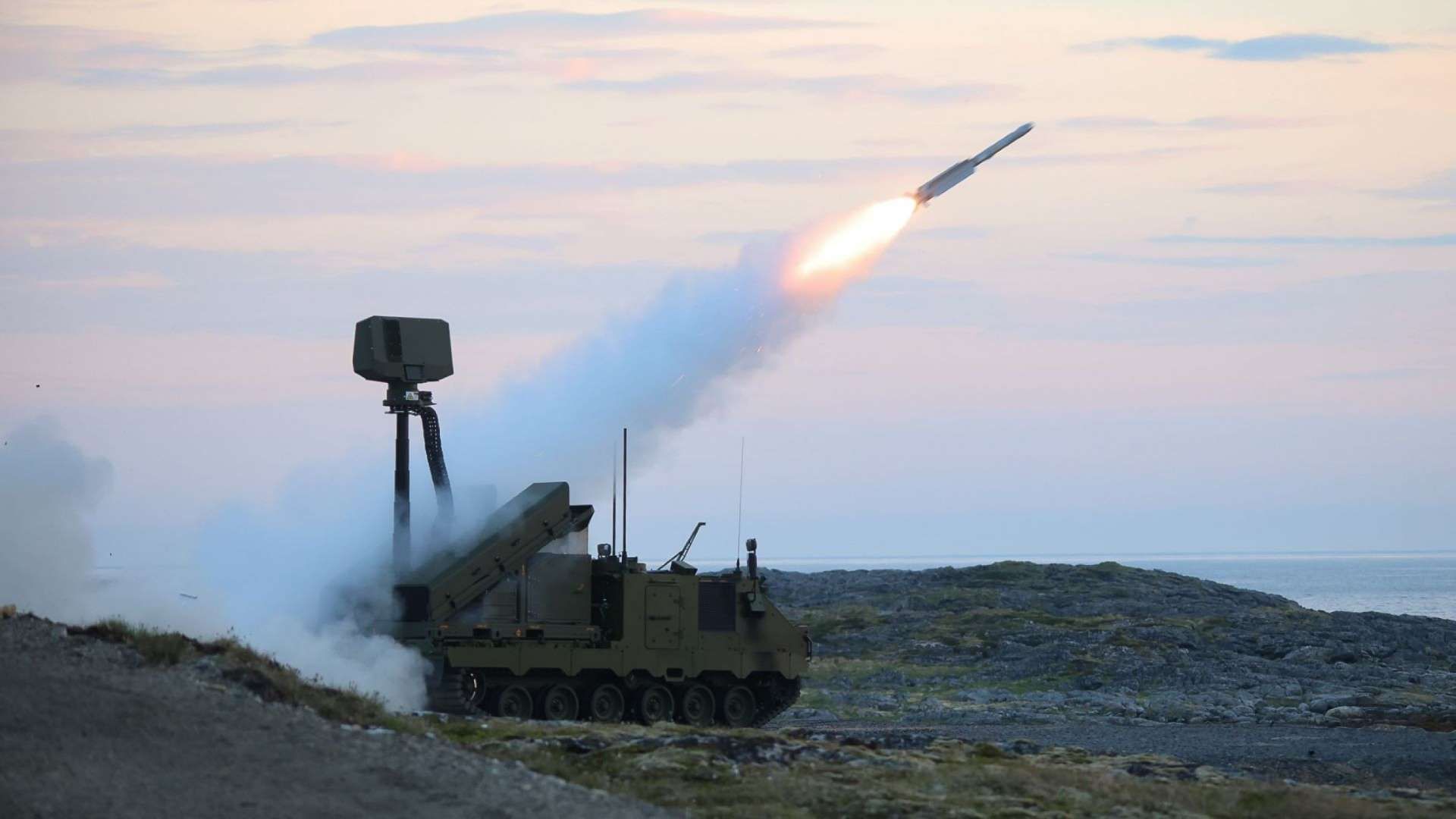Breaking News
Norway to receive six units of Kongsberg's new NOMADS air defense system.
On June 18, 2024, during the Eurosatory 2024 exhibition, the Norwegian company Kongsberg Defence & Aerospace announced the launch of the National Manoeuvre Air Defence System (NOMADS), a mobile, ground-based air defense system developed specifically for the Norwegian Army. This system includes a Short Range Air Defence (SHORAD) module that combines a radar, an operations room, and a missile launcher, all mounted on an ACSV G5 armored support vehicle from the German company FFG.
Follow Army Recognition on Google News at this link

This system includes a Short Range Air Defence (SHORAD) module that combines a radar, an operations room, and a missile launcher, all mounted on an ACSV G5 armored support vehicle from the German company FFG. (Picture source: Army Recognition)
The National Manoeuvre Air Defence System (NOMADS) was developed in collaboration with the Norwegian Armed Forces and the Norwegian Defence Materiel Agency. The SHORAD module integrates essential command and control functions from the medium-range NASAMS missile system, including a passive seeker missile and an AESA radar. This integration allows NOMADS to detect and intercept various threats, such as drones, UAVs, cruise missiles, helicopters, and aircraft. Additionally, the system features a Remote Weapon Station (RWS) for self-protection and can be integrated with different existing platforms.
Initially equipped with the IRIS-T missile, the system is now planned to be re-armed with the AIM-9X missile due to significant donations of IRIS-T missiles to Ukraine. Kongsberg Defence & Aerospace will oversee this rearmament process, with logistical and technical support from Raytheon, the American manufacturer of the AIM-9X missile.
Introduced in 2005, the IRIS-T missile can reach speeds of up to Mach 3 and has a range of 25 kilometers. It is equipped with an infrared imaging seeker, providing resistance to electronic countermeasures and flare suppression. The missile's thrust vector control allows it to perform 60g turns at rates of 60 degrees per second. The IRIS-T's lock-on after launch (LOAL) capability enables it to engage targets from all directions, including those behind the launching aircraft. Its warhead is designed to engage various airborne threats, including aircraft, helicopters, and incoming missiles.
The IRIS-T SL (Surface-Launched) and IRIS-T SLM (Surface-Launched Mobile) variants extend the missile's application to ground-based air defense, capable of intercepting cruise missiles and UAVs with a range of up to 40 kilometers. These variants are integrated into several air defense systems used by multiple NATO countries.

Initially equipped with the IRIS-T missile, the system is now planned to be re-armed with the AIM-9X missile due to significant donations of IRIS-T missiles to Ukraine. (Picture source: Army Recognition)
The AIM-9X Sidewinder missile, an infrared-tracking, short-range air-to-air missile introduced in 2003, is designed to engage high-performance aerial threats. It can achieve speeds of Mach 2.5 and a range of approximately 20 kilometers. The missile features a high off-boresight focal-plane array seeker and thrust vector control, enabling it to perform tight maneuvers and engage targets outside the pilot's line of sight using a helmet-mounted display. The AIM-9X Block II variant includes improvements such as lock-on after launch (LOAL) capability and a redesigned fuse, allowing it to engage targets at longer ranges. This missile can be launched from various platforms, including the F-15, F-16, F/A-18, and F-35 aircraft, as well as ground-based systems like NASAMS.
The NOMADS system can defend troops against small, short-range threats like drones and cruise missiles. Its configuration is designed for high-speed movement, effective engagement with enemy targets, and quick repositioning. The ACSV G5, the base vehicle for the NOMADS, is an Armoured Combat Support Vehicle developed by Flensburger Fahrzeugbau Gesellschaft (FFG) for the Norwegian Army. It is powered by a 460 kW MTU engine, paired with a fully automatic ZF transmission with six forward and two reverse gears, enabling speeds up to 74 km/h. The vehicle has a combat weight of 29 tons and a payload capacity of 9 tons, with a composite rubber track system that reduces vibrations and noise.
The ACSV G5 measures approximately 2.99 meters in width and 3.05 meters in height, with a climbing capacity of 60%, the ability to cross 2.3-meter ditches, and ford water up to 1.2 meters deep. It has an operational range of 600 kilometers, with an additional 12-hour operational capacity. The vehicle's interior provides 14.5 cubic meters of space, designed to accommodate a crew of two and up to 12 soldiers. The interior can be configured for different missions, featuring ergonomic, blast-resistant seating and modern communication systems. This modular approach allows for upgrades and maintenance over time.

In Norway, the introduction of the NOMADS is expected to strengthen the Norwegian Army's air defense capabilities, particularly for front-line units. (Picture source: Norwegian MoD)
The NOMADS combines air defense capabilities with command and control (C2), radar with Identification Friend or Foe (IFF), and missiles on a single platform, allowing for autonomous air defense operations both day and night. Typically networked and integrated into NATO's Integrated Air & Missile Defence (IAMD), the NOMADS ensures interoperability with allied forces and can adapt to any NATO-compatible ground-based air defense (GBAD) mission. Its advanced command and control system can prioritize threats and launch multiple missiles at different targets simultaneously.
In Norway, the introduction of the NOMADS is expected to strengthen the Norwegian Army's air defense capabilities, particularly for front-line units. This mobile air defense system is designed to protect maneuvering army forces, transportation routes, command centers, and logistical areas in dynamic land combat environments. Its high mobility, maneuverability, firepower, and protection meet the standards required for mechanized units, specifically targeting the growing threat of drones and short-range missiles.
Recent testing in Andøya, Norway, demonstrated the system's capabilities and received positive feedback. The testing covered the entire operational chain, from target detection by sensors to missile launch. Project manager Geir Sandberg from Forsvarsmateriel expressed satisfaction with the successful tests, emphasizing the importance of modern air defense in combat scenarios against high-tech opponents. The initial delivery will see six NOMADS systems provided to the Norwegian Armed Forces, with full operational capability expected between 2026 and 2028.
The Dutch armed forces have also expressed interest in acquiring the NOMADS, potentially joining the contract with Norway and expanding the system's footprint within NATO allies. The Dutch requirement is for 18 vehicles, with considerations for accommodating more missiles than the Norwegian configuration. According to Hardpunkt, the German government is also contemplating making the system available to the Ukrainian armed forces, potentially involving primarily German components if Germany finances the project alone. Alternatively, the integration of radars from other countries like Sweden and Denmark is also being considered.

The ACSV G5, the base vehicle for the NOMADS, is an Armoured Combat Support Vehicle developed by Flensburger Fahrzeugbau Gesellschaft (FFG) for the Norwegian Army. (Picture source: Army Recognition)

























